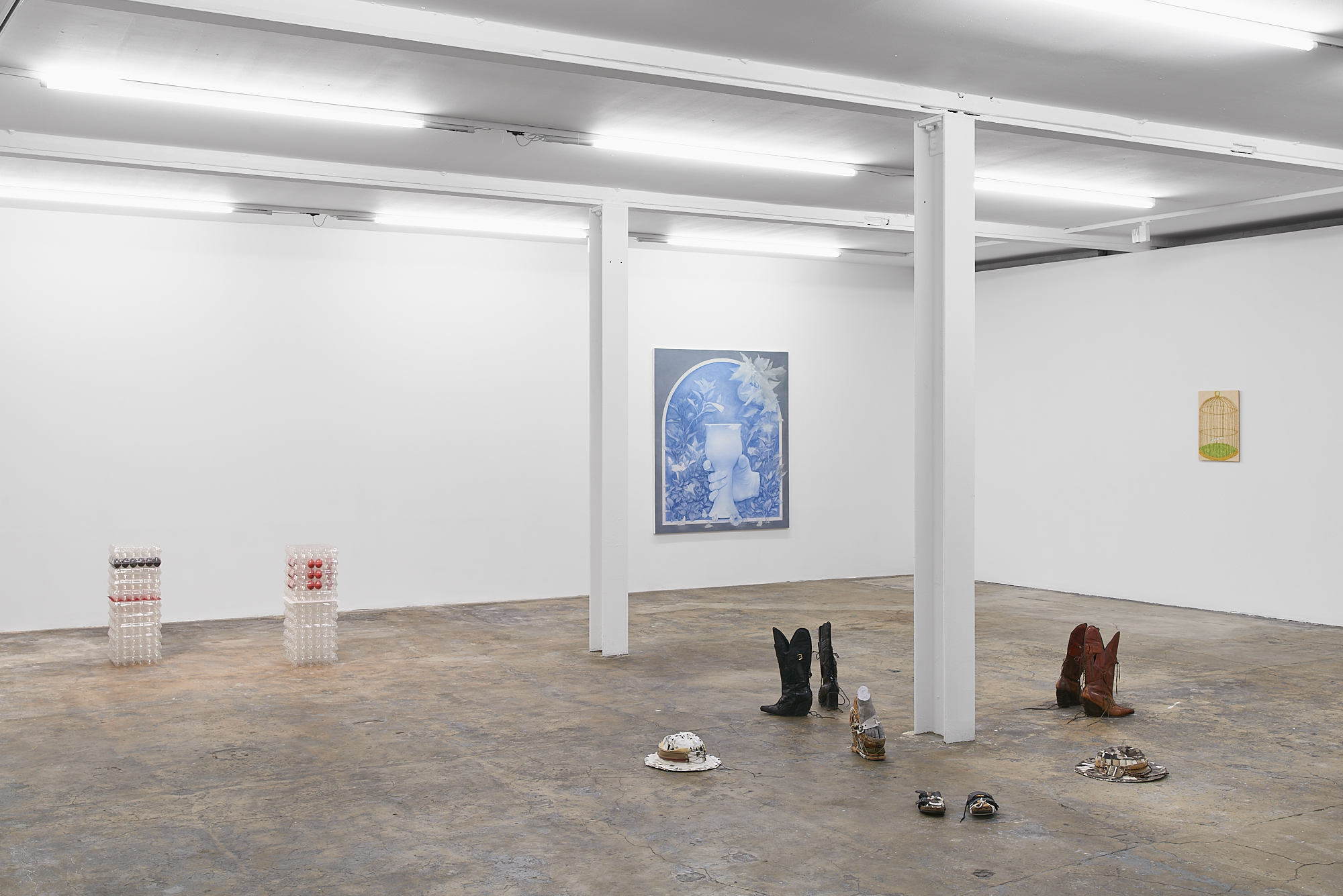Eigenheim is a German word which translates to describe a single-family home or a stand-alone house. When used poetically, Eigenheim can also refer to a home for oneself, an idea that takes on new meaning in today’s world. Many of the works in this exhibition interrogate and develop a relationship between interior and exterior spaces, both architectural and psychological. Domesticity and in turn, psychic interiority, have become all-too familiar spaces for reflection and rethinking in the last months. In Eigeinheim, artists reimagine objects, relationships or spaces that invoke the presence of an individual implied by their absence. Others interlace talismans of nostalgia and subjective taste, to afford an escape into fantasy, while bringing awareness to the precarious performance of desire and aspiration.
In 2006, Matthew Higgs curated a group exhibition at Gladstone Gallery in New York, titled Dereconstruction. In the exhibition text, he writes “The works in Dereconstruction oscillate between the logical and illogical (hints of surrealism prevail.) The works seek to establish an entanglement between the organic and the inorganic, between interiority (i.e. that which is hidden, or suppressed from view), and exteriority (i.e. that which exists on or beyond the surface).” Higgs’ choice of the word ‘entanglements’ expresses an inextricable, reliant relationship between ideas, states or materials that might otherwise be perceived as disparate or conflicting. The works in Eigenheim articulate similar such notions: internal space versus external facade, intense connection despite separation, virtual closeness but physical distance, precarity as opposed to stability, fantasy enmeshed with reality. Not opposed but intertwined, these binaries complicate one another, woven together into the fabric of our new reality, a complicated, disrupted, anxious, ‘entangled’ reality.

